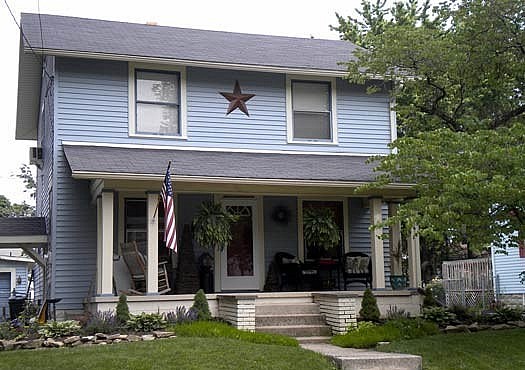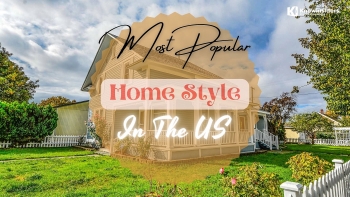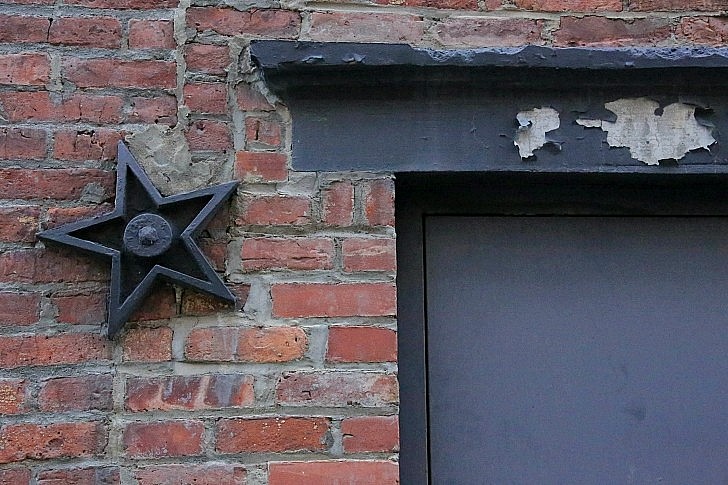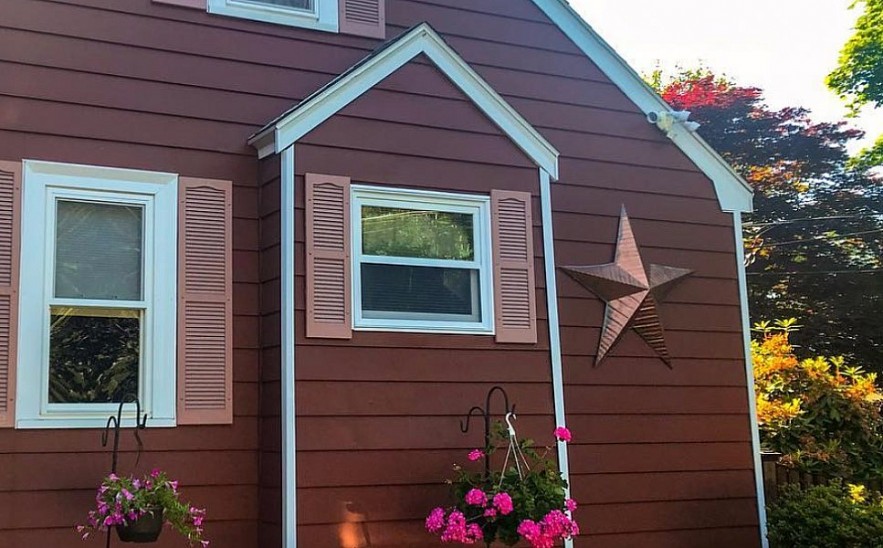The Metal Stars on U.S House: History, Real Meaning and Myth
 |
| What is the Real Meaning Behind the Metal Stars on this House? |
| Contents |
When foreign visitors—and even Americans—see the five-pointed stars affixed to the walls of numerous rural American homes, they are frequently perplexed.
The majority of stars are composed of metal, though some are also built of wood.
In other instances, they are directly painted onto the building.
For aesthetic purposes alone, the homeowners hang the dilapidated-looking metal stars from their ceilings. They are typically found in different sizes and have five points. They are occasionally suspended from the porch wall. At other times, they're hanging on a barn, the garage, or close to the gable, among other places.
What then are these stars with five points?
Locals or home owners will respond with different names if you ask them. There are numerous names for them, such as Pennsylvania Star, Barnstars Star, and Amish Barn Star.
The inhabitants will regale you with numerous folktales and superstitions pertaining to this five-pointed star exterior ornamentation.
Discover the fascinating mysteries surrounding the five-pointed star that is affixed to US homes by signing up with Knowinsiders.com.
 Top 8 Most Popular Home Styles In The U.S Top 8 Most Popular Home Styles In The U.S Paying attention to your home’s design can make it feel less like a place to sleep and more like an enjoyable space to you spend ... |
The Interesting History Behind the Metal Stars on Houses and Porches
According to historians, the first people to hang primitive stars on the side of barns were Dutch and German settlers. The stars were hung to ward off evil and bring good luck to farmers and they still hold the same symbolism today.
Centuries ago, groups of religious refugees from Germany migrated towards Pennsylvania. Among those refugees were Amish and Mennonites – distinctively plain-dressed demographics – along with Lutherans.
These groups eventually became homogenized in the eyes of the public and were referred to as the “Pennsylvania Dutch” alone. A few of the pioneers adorned their barns with vibrant geometric paintings. They gave the different symbols meanings. But eventually, they reduced the number of symbols they used to just one: a star.
Following the American Civil War, the Amish barnstars gained enormous popularity in Pennsylvania. Some represented the person who built the barn, while others were purely decorative or superstitious. They also served as a source of identity and pride.
According to Terry Bishop, a florist at Mugford's Flower Shoppe in Westborough, the stars might be a developed variation of the pineapple, which is commonly placed on doors as a greeting.
 |
| A Black Metal on Old Brick House in the US |
| A "barn star" and may have originated with the Pennsylvania Dutch, who fled Europe in the 18th century to escape religious persecution and settled in the area. The Amish, Mennonites, and others began to paint various symbols on barns and houses, including a star that was thought to bring them good luck. |
What is the Real Meaning Behind the Metal Stars on Houses and Porches?
 |
| A Large Metal Star on New House in the US Today |
In reality, these plates serve an important structural function, and their prevalence in older US cities (such as Philadelphia, New York, and St. Louis) is no accident — they can be extremely useful in holding old buildings together.
Consider the traditional barn red color, which was thought to be tinted with rust to keep the wood from rotting. As it turns out, those stars on old buildings serve a purpose as well.
Older buildings may have stars on the front or sides, and they may be large or small.
The stars can have 5 or 6 points, and they are frequently painted in different colors to match the shutters and trim.
However, the stars serve a purpose other than to look good.
Different colored stars also have different meanings. Black and blue stars represent farm protection. Brown stars represent strength and friendship. A white barn star represents purity and energy, whereas a violet star represents holiness. A green primitive star is said to bring fertility and growth to the farm. Finally, a yellow star represents man's love for the sun.
The stars are essentially massive washers. They exist to prevent long metal bolts from slipping through the bricks. This technique of running a long bolt through the house and securing it at the ends prevents old brick buildings from swaying and crumbling. Because floor joists were frequently placed running front to back, they are frequently found on the fronts of these buildings. The bolts pass through the brick, into the floor joists, and emerge on the other side.
Brick buildings can settle and bulge over time. If this occurs, the building's structural integrity suffers. To counteract the building's movement over time, these bolts keep it straight. The stars are a beautiful way to do this, but large nuts or plain metal plates can also be used.
There are also other decorative shapes used for this purpose, such as the violin-like scroll patterns seen on old buildings. So the next time you see these "decorative" features on a building, you'll know that it was once a little wobbly and needed some assistance standing up straight.
Amish Barn Stars and Pennsylvania Stars
For one thing, depending on where you are, those specific stars have a very specific name. They are known as Amish Barn Stars, Barnstars, and Pennsylvania Stars, and are typically attributed to the Pennsylvania Dutch who immigrated to the United States in the 1880s.
The five-pointed star was also considered a lucky symbol by the Pennsylvania Dutch. Although it is not official, the color of the star appears to denote a specific meaning. Blue stars, for example, represent protection, while green stars represent fertility and growth, making them ideal for a farm.
The amusing aspect of these stars is the number of rumors surrounding their meaning. Most homeowners and farmers who own one have probably never given it much thought, but others have.
The practice quickly expanded beyond religious affiliation, with homeowners using the star as a kind of property fashion statement or to represent a warm welcome to visitors. Some consider it patriotic, a practice that grew in popularity after the Civil War.
| Pennsylvania Dutch historian David Fooks said that the star didn’t carry any particular importance and that the Amish simply liked to decorate their barns, which were hugely important to their farming communities. |
Star Bolts and Star Anchors
A slightly different type of star can occasionally be found on brick buildings. They are not strictly decorative and are known as star bolts. Instead, the star is a washer for an iron rod that is placed through a sagging or compromised wall to maintain structural integrity and prevent further buckling.
To stabilize things, star bolts (and other shapes) are a common engineering retrofit, running through the brick and connecting facades to the joists behind the brick. Depending on the severity of the problem, bulged bricks may need to be pushed back into place first. The rods are then threaded through and tensioned with washers. The tension load is then distributed across multiple bricks by the surface plates. A star shape can do the job well because it can reach out in multiple directions at once while also appearing intentional in different orientations.
Anchor plates can also be shaped like diamonds or circles; square versions are common, simple, and cost-effective, and can be found all over the Bay Area, reinforcing old walls for seismic reasons.
Myth and Superstition about the Metal Star on House and Porches
 |
| Myth and Superstition about the Metal Star on House |
The claim that the metal star indicates that the homeowners are swingers appears to have originated in a 2007 thread on stripersonline.com, and the thread's conclusion appears to be completely arbitrary.
The word "swinger" is occasionally used to refer to couples who switch off their sexual partners.
"My wife and I decide to start a rumor - the star means you are a swinger," the individual wrote. A number of "secret signs" that a homeowner is a swinger have been reported by the New York Post; however, none of these signs have been proven, so one should interpret them cautiously. For example, décor featuring pink flamingos, pampas grass, and pineapples is said to indicate that you are surrounded by swingers.
Rumors surfaced in 2007 suggesting that stars considered hosts to be swingers—a term used to characterize couples who "swapped" partners. This story sounds too crazy to be true, as most rumors do.
Once more, in late December 2020, a social media post went viral claiming that homes with five-pointed stars on the outside are likely to have "swingers" living in them.
Actually, not all rural Pennsylvanians and Vermonters are swingers. Most likely, it's just people who think the star makes their home look better and more traditional, or who like what the star stands for.
The idea that "swingers" place five-pointed stars outside their houses to draw in potential "swinger" partners is unsupported by the evidence we uncovered.
| Anyone can readily find a barn star for purchase with a simple Google search — they are fairly common decorations, particularly in places like Pennsylvania. And no, you won't be putting up a bat signal for itinerant swingers. |
 Tips and Best Ideas to Decorate your Tiny House Tips and Best Ideas to Decorate your Tiny House Just because a home is tiny doesn’t mean it has to feel like it. Use these tiny house decorating tips and ideas to make your ... |
 15 of Weirdest Houses in the World 15 of Weirdest Houses in the World Everyone has a different way of expressing themselves and different ways to choose their house design to live in. Below is a list of the ... |
 10 Most Bizarre Houses Ever Built in the US 10 Most Bizarre Houses Ever Built in the US Not only are these peculiar buildings interesting to look at, but they're also full of fascinating facts. Check out right below the list of 10 ... |























